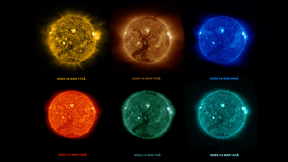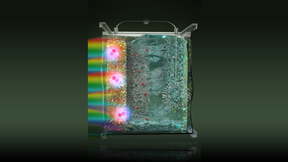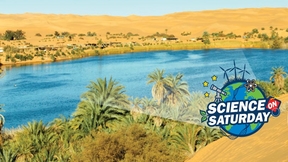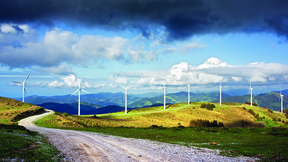Back
The first images from the Solar Ultraviolet Imager (SUVI) instrument aboard the National Oceanic and Atmospheric Administration’s GOES-16 satellite capture a large coronal hole on the sun. The Geostationary Operational Environmental Satellites (GOES) are part of NOAA’s space weather monitoring fleet. GOES-16 launched late last year. GOES-16 (known as "GOES-R" before its…
A Lawrence Livermore National Laboratory (LLNL) scientist and collaborators are fine tuning the mechanisms to generate hydrogen from water and sunlight. Hydrogen production offers a promising approach for producing scalable and sustainable carbon-free energy. The key to a successful solar-to-fuel technology is the design of efficient, long-lasting and low-cost…
WHO: Lawrence Livermore scientists Jeff Mirocha and Suzanne Singer, along with Las Positas Community College instructor Eric Harpell and Granada High School teacher Tom Shefler, will present "Green Power: Making Electricity Out of Thin Air," the second of four lectures for the Science on Saturday series for students.WHAT: This informative and entertaining lecture will…
Learn more about Lawrence Livermore National Laboratory’s modeling and simulation capabilities critical for the wind power industry during the next monthly installment of the Industrial Partnerships Office (IPO) Technology & Market Discovery Webinar series, on Tuesday, Dec. 9.The presentation by Lab engineer and wind program leader Wayne Miller, titled "Toolkit for the…
LIVERMORE, Calif. - The use of plasmonic black metals could someday provide a pathway to more efficient photovoltaics (PV) -- the use of solar panels containing photovoltaic solar cells -- to improve solar energy harvesting, according to researchers at Lawrence Livermore National Laboratory (LLNL).The LLNL Materials Engineering Division (MED) research team has made…









